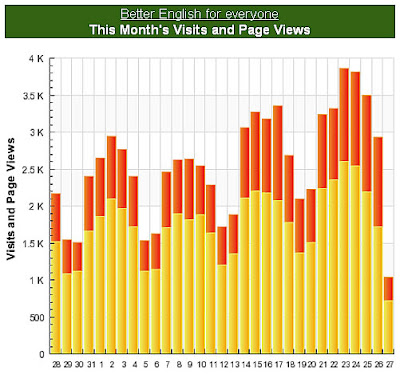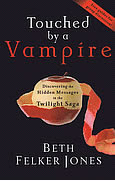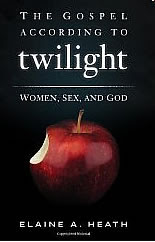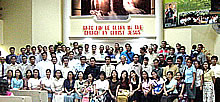 According to my Sitemeter.com tracker, my website “Better English for everyone” reached over 800,000 visitors last Tuesday afternoon. The website became online September 27, 2007. It has been averaging 2,000 plus visitors daily since last week. Google Analytics, my other website tracker, reports that visitors have come from 195 countries or territories. The top ten countries in number of visitors are the USA, Philippines, India, United Kingdom, Brazil, Thailand, Spain, Mexico, Canada, and Australia.
According to my Sitemeter.com tracker, my website “Better English for everyone” reached over 800,000 visitors last Tuesday afternoon. The website became online September 27, 2007. It has been averaging 2,000 plus visitors daily since last week. Google Analytics, my other website tracker, reports that visitors have come from 195 countries or territories. The top ten countries in number of visitors are the USA, Philippines, India, United Kingdom, Brazil, Thailand, Spain, Mexico, Canada, and Australia.
“Better English for everyone” contains numerous links to Gospel websites and my website trackers report that these have been clicked, even by visitors from Restricted Access Nations. Thanks to everyone who have browsed this site. Soli Deo gloria!
Note: Please read 700,000 visitors and counting for “Better English for everyone” website; jump to “How you can help this website” or “How I became involved in Internet ministries”. The Sitemeter graphic above shows the number of visitors (yellow bars) and page views (red bars) from October 28 to early November 27.
The Sitemeter graphic above shows the number of visitors (yellow bars) and page views (red bars) from October 28 to early November 27.
Note: The website reached 3,000 visitors (first time ever) as of Tuesday, November 29, 2011.
Sunday, November 27, 2011
800,000 visitors and counting for “Better English for everyone” website
Tuesday, November 15, 2011
The Gospel According to Twilight; Twilight’s Mormon connection
The Darkness of Twilight, by Sue Bohlin (Probe Ministries)
The Trouble with Twilight, Christianity Today interview by Laura Leonard of Beth Felker Jones, Wheaton College theology professor and author of “Touched by a Vampire: Discovering the Hidden Messages in the Twilight Saga” (Random House, 2009)The Twilight saga is a publishing and movie phenomenon that sweeps tween and teen girls (and a whole lot of other people) off their feet with an obsessive kind of following. Millions of Christian girls are huge fans of this series about love between a teenage girl and her vampire boyfriend-then-husband. But it’s not just a love story made exciting by the danger of vampires’ blood-lust. I believe the Twilight saga, all four books and their corresponding movies, is spiritually dangerous. I believe there is a demonic origin to the series, and the occult themes that permeate the books are a dangerous open door to Satan and his hordes of unholy angels.
Twilight is also spiritually dangerous in the way it presents salvation. When Daddy Vampire Carlisle turns Edward into a vampire, it is described as saving him. He ended a 17-year-old boy’s physical life and turned him into an undead, stone cold superbeing, which Edward describes as a “new birth.” Vampire Alice describes the process as the venom spreading through the body, healing it, changing it, until the heart stops and the conversion is finished. Poison heals, and changes, and converts to lifelessness? Healing poison? This is spiritually dangerous thinking. Isaiah warns us (5:20), “Woe to those who call evil good, and good evil; Who substitute darkness for light and light for darkness; Who substitute bitter for sweet and sweet for bitter!”
This upside-down, inside-out way of thinking is rooted in Stephenie Meyer’s strong Mormon beliefs. Twilight’s cover photo of a woman’s hands offering an apple is an intentional reference to the way Mormonism reinvents the Genesis story of the Fall. LDS (Latter Day Saints) doctrine makes the Fall a necessary step, called a “fall up.” At the beginning of the book you will find, alone on a page, Genesis 2: 17—”But of the tree of the knowledge of good and evil, thou shalt not eat of it: for in the day that thou eatest thereof thou shalt surely die.” (Read the complete article)
Twilight, Harry Potter, The Wizard of Oz and the Wiccan Revival, from Good Fight Ministries, by Joe Schimmel, pastor of Blessed Hope Chapel, an evangelical non-denominational fellowship in Simi Valley, CaliforniaJohn Granger wrote in Touchstone magazine that the Twilight novels are “an allegory of one gentile seeker’s coming to the fullness of Latter-day Saint faith and life.” Are there any particularly Mormon themes in the books that might be at odds with a Christian worldview?
I read a quotation the other day from a Mormon woman suggesting the books could be used as a Mormon evangelism tool, saying, “Perhaps we could say to people, ‘We can promise you will be together forever and no one will even have to bite you.’” I can see this theme of eternal family as the place where salvation happens as an “in” to Mormon evangelism, as it is very much part of Mormon thought. As is the way goodness is approached in the books: the vampires in the books are struggling against their darkest desires [to drink human blood] and they talk quite a bit about their souls—whether they have souls, and whether God might reward them for their attempts to be good. What’s missing is the Christian gospel, the idea that we can’t overcome our darkness on our own, that no matter how hard we work to be good, we're going to fail, and we’re going to need Jesus. The picture of goodness in the books is a salvation by works. “I’ll try hard enough and perhaps God will be pleased.” (Read the complete interview)
Very few people are aware of the shocking truth that both Stephenie Meyer, who authored the Twilight saga, and J. K. Rowling, who authored the Harry Potter series, appear to have channeled their novels as evil spirits directed them. Like Rowling, Meyer has set her sights on our vulnerable youth; the Wall Street Journal reported, “Twilight has targeted the collective soul of teenage America, and will surely have its way.”The Gospel According to Twilight, by Elaine A. Heath, from Youthworker.com
Meyer claims that she was compelled to write Twilight after the story was first communicated to her through a dream in June of 2003. Meyer admitted:
“I woke up (on that June 2nd) from a very vivid dream. In my dream, two people were having an intense conversation in a meadow in the woods. One of these people was just your average girl. The other person was fantastically beautiful, sparkly, and a vampire. They were discussing the difficulties inherent in the facts that A) they were falling in love with each other while B) the vampire was particularly attracted to the scent of her blood, and was having a difficult time restraining himself from killing her immediately… I typed out as much as I could remember, calling the characters ‘he’ and ‘she.’” (Source: www.stepheniemeyer.com)
This dream was so significant to the Twilight saga, that Meyer produced a transcript of her dream in Chapter 13 of her book, Twilight, entitled "Confessions." Meyer claims that sometime after she “received” the revelatory dream she heard incessant voices in her head that wouldn’t stop until she would type, "Bella and Edward [the vampire] were, quite literally, voices in my head. They simply wouldn't shut up. I'd stay up as late as I could stand trying to get all the stuff in my mind typed out, and then crawl, exhausted, into bed … only to have another conversation start in my head.” (Read the complete article)
Elements of the relationship between Edward and Bella make the hair stand up on feminist Christian necks, especially when adding in the bit where Bella scarcely survives the violence of her wedding night. Though broken and bruised the next morning, she begs for more. This part of the story is terrible news for girls and women—unless you read it through another lens, such as Stephenie Meyer’s.
The Eve story has an entirely different meaning in LDS theology, with Eve as a moral heroine who sacrifices her life so others can live. What is going on here? Is Bella a Christ figure, offering her body and blood for others’ salvation? Or is she a sex-hungry temptress who’s willing to go to hell if she can just have her guy? Is Bella fallen, redemptive or both? (Read the complete article)
Subscribe to:
Posts (Atom)












